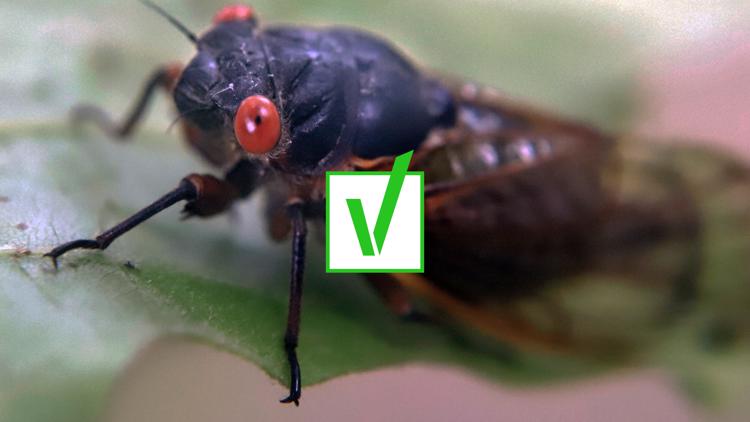The Brood X cicada species is emerging soon in parts of the United States, including the southeast and midwest. These unique cicadas emerge just once every 17 years.
Out of the close to 3,000 species of cicadas around the world, the U.S. has 190, but only seven that lie dormant for years before emerging, according to Dr. Floyd Shockley from the National Museum of Natural History. These include the impending emergence of the Brood X cicadas (pronounced “brood ten”).
One of the questions that arises during each emergence of Brood X is whether people or animals can eat them. This year, many on social media are wondering whether it’s safe to eat the large insects, and what happens if their pets ingest them.
THE QUESTION:
Can humans and pets eat Brood X cicadas?
THE SOURCES:
-Dr. Floyd Shockley, collections manager for the Department of Entomology at the National Museum of Natural History
THE ANSWER:
Yes, cicadas are edible for both humans and pets, according to Dr. Floyd Shockley and The Nature Conservancy.
“Dogs in particular, like to eat them,” Dr. Floyd Shockley said. “They're there, they're nontoxic, so they're not going to be poisoning your pet. But what happens often, especially in dogs, is that they're eating to the point that they don't realize that they've eaten too much, and it will upset their stomach, but it's totally safe.”
The Nature Conservancy also says cicadas are not venomous, which makes them a favorite among cats as well.
But what happens with humans?
Shockley said that as cicadas have been periodical insects for many years, there’s documentation that Native Americans used them as a food source, along with many cultures in other parts of the world.
“They're really high in protein, they're relatively low in fats, especially the sort of high cholesterol fats, so they're actually a relatively nutritious food source. If you can get past the fact that you're eating a cicada,” Shockley said.
If you decide to make a meal of cicadas, The Nature Conservancy warns they need to be organic, meaning free from pesticides usually found under lawns in backyards. “‘Organic’ cicadas are more likely to be found in parks or other areas free from chemical treatment,” the website says.
Dr. Shockley said cicadas work well with any recipe that calls for shrimp, among other recipes. “You have to remove the wings and the legs before you prepare them. But it's really easy to do and you can flash freeze them. So you're not plucking them off while they're still alive or anything.”
Shockley said the only risk is having a shellfish allergy, but other than that, they’re completely safe to eat.
Where can you find them?
Dr. Shockley said it depends on the location as some areas aren't going to have as many bugs emerge as others.
“In the main areas of the of the emergence, there could be anywhere from 1 to 1.5 million cicadas per acre, as a general estimate, and so it really is not inconceivable for the really dense areas like DC, Maryland and southern Pennsylvania for for it to reach the billions very, very quickly,” he said.
The National Conservancy website specifies that Brood X will see trillions of periodical cicadas, including “parts of Delaware, Georgia, Illinois, Indiana, Kentucky, Maryland, Minnesota, North Carolina, New Jersey, New York, Ohio, Pennsylvania, Tennessee, Virginia, West Virginia and Washington, DC.”



